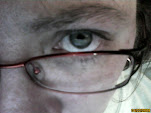CRAFT: Identifying The Voice
Voice is a hard issue to tackle in writing. I'm still not sure I've found mine, either in my personal or my business writing.
I just completed an assignment for a client, proofreading their monthly newsletter. I've done some ghostwriting and developmental editing for them in the past, so I had to rein myself in on this one. I found myself overwhelmed with the urge to 'tweak' one of their contributor's articles.
After I finished the proof, as an exercise, I made the changes I thought it needed for better flow and precision in the information being provided. When I looked at it with my changes it was no longer the same article. Sure, in my opinion, it was tighter and more accurate, but it was wrong, too. The original author has a slightly folksy style that lends itself to excessive use of capital letters, 'unique' punctuation, and wordiness (I did correct the first two of these). A friendly read, but not as precise as I felt a technical article (which it was) should be.
If the client had wanted me to do heavy copyediting instead of just a proof, the article would be completely different. Which brings me to my point.
When, in the editorial process, do you stop?
How do you separate your natural voice as a writer/editor from that of the original author?
Frankly, right now, I don't know the answer. However, since this is my chosen profession, I guess I'd better devote some time to finding out. I'll keep you posted. If anyone has any suggestions, please email me at the address to the side, or comment on this post.
 Ink Thinkin
Ink Thinkin


